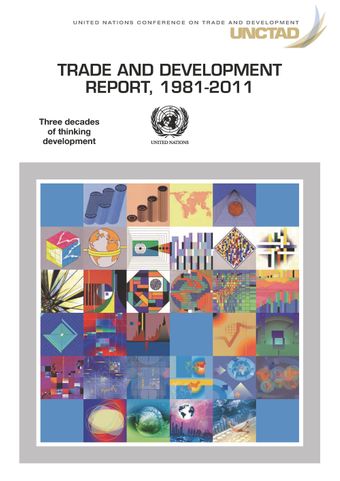The macroeconomic reasoning in the TDR

- Author: United Nations Conference on Trade and Development
- Main Title: Trade and Development Report 1981-2011 , pp 91-109
- Publication Date: August 2012
- DOI: https://doi.org/10.18356/021c8092-en
- Language: English
UNCTAD’s work was initially based on a centreperiphery view of the world in which there were rich, technologically advanced industrial countries and poor technologically backward developing countries, and the basic pattern of international trade was the exchange of the manufactures produced in the former for the commodities produced in the latter. Steady economic growth was assumed to be inevitable in the advanced industrial countries and the problem of development in the peripheral countries was seen as a question of how to integrate them into the growth dynamic of the centre in a way in which there were mutual benefits for both the centre and the periphery. It was argued that this would not happen automatically because of the balance of payments constraints facing developing countries given the structure of international trade. In this situation, the free play of market forces could not guarantee fast enough growth rates in developing countries to address the pressing social problems of poverty, malnutrition and accelerating jobless urbanization. There was therefore a need for development planning to help developing countries to accelerate the process of development and such disciplined effort should be supported by international cooperation.
-
From This Site
/content/books/9789210553988s004-c004dcterms_title,dcterms_subject,pub_keyword-contentType:Journal -contentType:Contributor -contentType:Concept -contentType:Institution105


